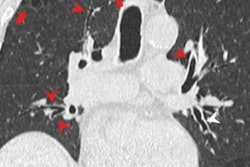
The U.S. Preventive Services Task Force's (USPSTF) 2021 recommendation on low-dose CT lung cancer screening expanded the pool of eligible individuals, but it didn't necessarily eliminate disparities linked to race, researchers have found.
Broadening eligibility criteria alone in order to make screening equitable is just not enough, wrote a team led by Laura Pinheiro, PhD, of New York-Presbyterian Hospital in New York City in a study published September 2 in JAMA Network Open.
"Expanding lung screening eligibility to include more minoritized groups and more groups with low socioeconomic status may perpetuate or perhaps even worsen disparities in the absence of health care reform," Pinheiro and colleagues warned.
Overall, incidence and mortality rates for lung cancer have decreased over the past 30 years, due in part to early cancer detection via low-dose CT, smoking cessation initiatives, and improvements in treatment. But disparities continue to exist, particularly as Black individuals tend to have higher incidence and mortality rates for lung cancer compared to their white counterparts.
Researchers have attributed the difference to socioeconomic disparities -- such as lack of health insurance and lower levels of education and income -- as well as resource differences by residential area, and structural racism.
In an attempt to reduce the screening gap, in 2021, the USPSTF expanded the pool of people eligible to screen for lung cancer, lowering the starting age from 55 to 50 and the number of required smoking pack years from 30 to 20. But whether this change has actually improved access to lung cancer screening among racial and ethnic minorities continues to be debated, with some arguing that it does and others arguing that it doesn't.
The investigators sought to determine whether changes in the USPSTF's low-dose CT lung cancer screening guidance from its 2013 to its 2021 recommendations actually increased screening eligibility among Black adults and to investigate the consequences of social factors on screening disparities. They used data from the Reasons for Geographic and Racial Differences in Stroke study, and they included information from 14,285 Black and white adults who participated between January 2003 and October 2007, including data from all who would have been eligible for lung cancer screening according to the USPSTF's 2021 guideline compared with the 2013 version.
The USPSTF's expanded guidance did increase the pool of adults eligible to be screened. Not only did the percentage of eligible individuals increase but the eligibility gap in screening between Black and white people also narrowed.
But the updated recommendation didn't necessarily mitigate socioeconomic factors. Black individuals were significantly more likely to report low annual household income, to have lower educational levels, to live in urban areas, and to have smaller social networks on which they could depend compared with their white peers, and when these factors were accounted for, the difference in screening eligibility in percentage points between Black and white individuals didn't change between recommendations.
| Effect of 2021 USPSTF guidance on pool of individuals eligible for low-dose CT lung cancer screening | ||||
| Year | Percentage of white race eligible for screening | Percentage of Black race eligible for screening | Percentage point difference | Percentage point difference after adjusted for socioeconomic factors |
| 2013 | 27.2% | 19.2% | -8 | -12.66 |
| 2021 | 34.6% | 28.8% | -5.8 | -12.15 |
"Although the 2021 revised USPSTF screening recommendations were designed to reduce disparities in screening eligibility, after application of the updated guidelines to diverse clinical populations, the lower age and pack-year thresholds improved but did not eliminate racial disparities," the authors wrote.
The truth is that the healthcare enterprise needs to change for racial differences to be eliminated, according to Pinheiro and colleagues.
"The findings of this cohort study suggest that although expansion of the USPSTF lung cancer screening eligibility criteria was an important step to address racial differences in screening, without broader political and socioeconomic policy changes that address structural and systemic racism, the intended results of these changes may not be achieved," the group concluded.





















